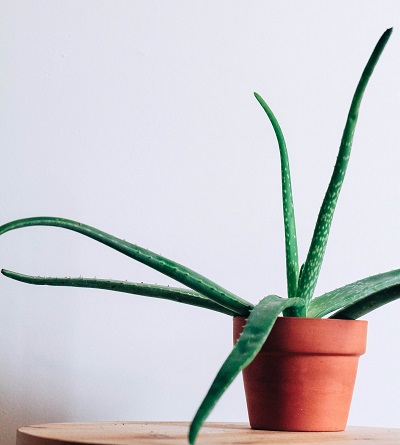
Aloe plants have a long and fascinating history, dating back thousands of years. For ancient Egyptians aloe vera was known as the “plant of immortality” and was used by the ancient Egyptians for medicinal and cosmetic purposes. Aloe vera was depicted in Egyptian wall paintings and was used to embalm bodies and heal wounds. During Greek and Roman times aloe vera was used by the ancient Greeks and Romans to treat a variety of ailments, including burns, wounds, and digestive problems. Aloe vera was introduced to Europe during the Middle Ages and was used by monks as a healing herb. In Colonial America aloe vera was introduced to the Americas by Spanish missionaries in the 16th century. It was used by Native Americans for medicinal purposes and was later used by colonists as a natural laxative.
Aloe vera is now widely cultivated for its medicinal and cosmetic properties. It is used in a variety of products, including skin creams, lotions, and shampoos. In addition to aloe vera, there are over 500 other species of aloe plants, many of which have been used for medicinal purposes throughout history. Some species of aloe, such as Aloe ferox, are still used in traditional African medicine today. Aloe plants are now widely cultivated around the world and are prized for their unique appearance and health benefits.
How to Grow Aloe Plants
Aloe plants are relatively easy to grow and care for, both indoors and outdoors. Here are some tips on how to grow aloe plants:
Location
Aloe plants prefer bright, indirect sunlight, so choose a location that receives plenty of light but not direct sunlight.
Well-Draining Soil
Aloe plants prefer well-draining soil that is slightly sandy. You can use a cactus or succulent potting mix or create your own by mixing sand, perlite, and potting soil.
Water Sparingly
Aloe plants are succulents and store water in their leaves, so they don’t need to be watered often. Water your aloe plant when the soil is completely dry, and be careful not to overwater, as this can cause root rot.
Good Air Circulation
Aloe plants prefer good air circulation, so make sure there is space between the leaves and the pot and avoid crowding the plant with other plants.
Fertilize Occasionally
Aloe plants don’t require fertilizer, but you can give them a boost by fertilizing with a balanced houseplant fertilizer once or twice a year.
Propagate with Offsets
Aloe plants produce offsets or “pups” that can be removed and planted to create new plants. Wait until the offset is several inches tall before removing it, and plant it in a separate pot with well-draining soil.
10 Fun Facts About Aloe Plants
Aloe plants have been used for medicinal purposes for thousands of years, dating back to ancient Egypt.
Aloe vera is one of the most widely recognized species of aloe and is commonly used in skincare and cosmetic products.
Aloe plants are succulents, which means they store water in their leaves, making them well adapted to arid environments.
Aloe plants come in a variety of sizes and colors, from small tabletop plants to large outdoor specimens.
Aloe plants can help purify the air by removing harmful toxins from the environment.
Aloe plants are not only useful for their medicinal properties but also for their beauty. They are often grown as ornamental plants both indoors and outdoors.
Aloe plants can be used to treat a variety of ailments, including burns, wounds, and skin irritations.
Aloe vera gel, the clear, jelly-like substance found inside the leaves of the plant, is a popular ingredient in skincare products due to its moisturizing and soothing properties.
Aloe plants are easy to care for and can be grown in a variety of environments, from homes to offices to outdoor gardens.
Aloe plants are non-toxic to humans and pets and can be safely grown in households with children and animals.
Related Articles & Free Email Newsletter Sign Up
Aloeaceae is a Great Plant for Your Greenhouse
Increasing the Lifespan of a Succulent Plant




Comment here